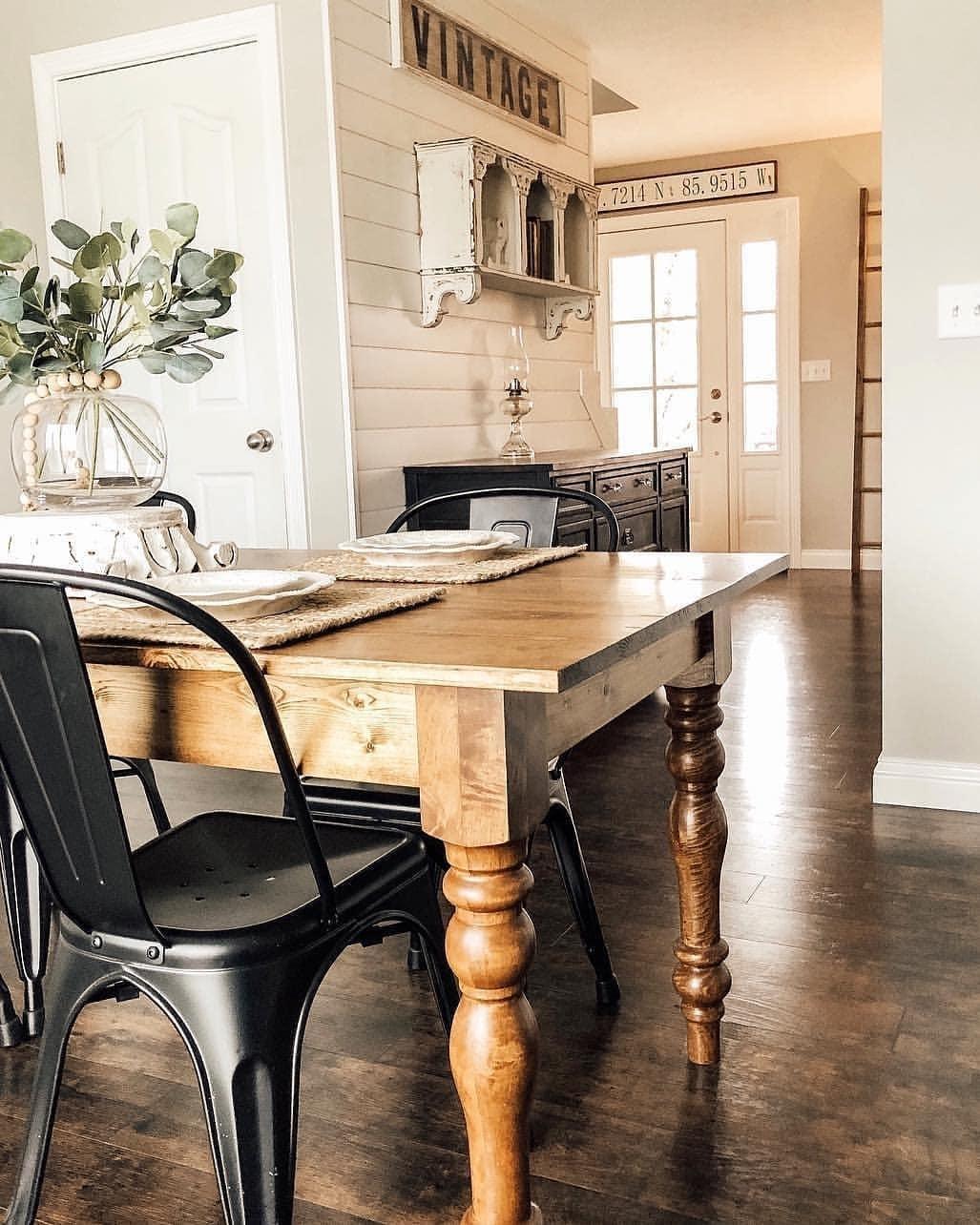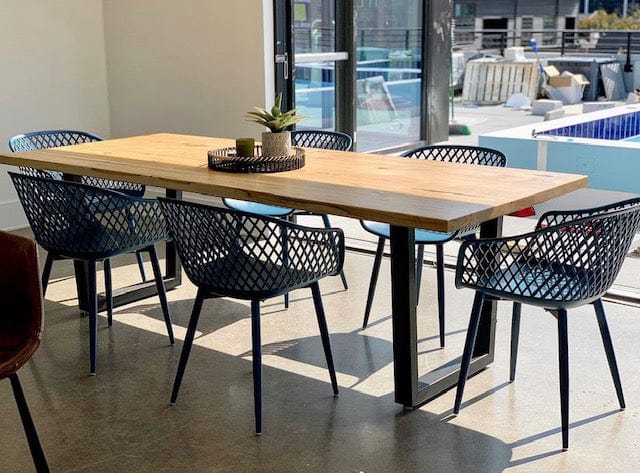Transform Your Dining Space with Stylish Dining Room Table Legs
From Typical to Modern: Locate the Ideal Dining Area Table Legs for Your Design
The option of dining-room table legs plays a crucial role in defining the overall personality of your area, linking the void between conventional craftsmanship and modern-day aesthetics. While traditional styles such as cabriole and turned legs stimulate a sense of ageless elegance, modern designs like hairpin and geometric options present an opportunity for striking aesthetic rate of interest. Assessing the appropriate equilibrium between these styles requires a nuanced understanding of your existing design and personal preference. As you think about these elements, the inquiry continues to be: just how can you flawlessly integrate these diverse leg designs to produce an unified dining experience?
Comprehending Table Leg Styles
The range of dining-room table leg designs can substantially affect both the visual appeals and performance of the room. Each leg design contributes distinct practical attributes and visual elements, catering to diverse design preferences and usage needs. Understanding these designs is vital for picking the best table that straightens with your overall interior decoration vision.
For example, tapered legs supply a tidy, classic appearance that can boost an area's sophistication, while pedestal bases offer security and optimize legroom, making them optimal for smaller rooms. Hairpin legs, a trademark of mid-century modern layout, introduce a commercial panache, permitting an airy, open feeling. Trestle legs evoke rustic charm, supplying robust assistance and a feeling of eternity.
Moreover, the choice of materials plays a significant function. Wooden legs can bring warmth and appearance, whereas steel options usually share a smooth, contemporary vibe. Eventually, comprehending table leg designs is necessary for producing a cohesive dining area that mirrors individual style while ensuring practicality and comfort. By attentively thinking about these components, you can enhance both the functional and visual allure of your eating area.
Conventional Table Leg Options
When choosing dining-room table legs, conventional choices commonly symbolize timeless beauty and workmanship. These designs mirror a rich heritage and a commitment to top quality, making them ideal for those that appreciate timeless visual appeals.
One of one of the most legendary typical leg styles is the cabriole leg, characterized by its stylish curved shape. This layout typically features attractive makings and is most frequently discovered in Queen Anne and Chippendale furnishings. Another popular option is the turned leg, which flaunts a collection of smooth, rounded shapes that give a timeless look while maintaining security.
Furthermore, the straight leg, while simple, uses a sturdy and unadorned framework that can mix seamlessly with a variety of tabletop designs. For those attracted to ornate describing, claw-and-ball feet legs stimulate a feeling of magnificence and can function as a stunning prime focus in any type of dining area.
Lastly, stand bases, although not purely legs, give a different standard alternative that permits sufficient legroom and can be beautifully sculpted. Each of these traditional leg designs adds to the general ambiance of a dining-room, marrying function with visual charm.

Modern Table Leg Layouts
Modern table leg styles use a diverse array of styles that highlight innovative products and tidy lines. These designs typically prioritize performance while functioning as striking centerpieces within a dining area. Minimal aesthetic appeals prevail, with legs crafted from products such as metal, glass, and engineered wood, which add to a ventilated and try this modern feel.
One preferred design is the hairpin leg, defined by its slim, tapered framework that supplies stability without frustrating the table top (dining room table legs). This style is often located in mid-century contemporary furniture and can effortlessly enhance different eating table forms. Another fad is making use of geometric shapes, where legs may handle asymmetrical or angular forms, including aesthetic passion and a touch of creativity

Blending Styles for Unique Rooms
Frequently, home owners seek to produce distinct dining rooms that show their personal design by mixing different design components. This strategy permits for the unification of diverse aesthetic appeals, resulting in a harmonious yet distinct atmosphere. For circumstances, matching a rustic wooden table with smooth, modern steel legs can develop an appealing contrast that boosts the room's total charm.
Additionally, integrating vintage table legs with modern table tops can evoke a feeling of history while maintaining a contemporary perceptiveness. Such mixes not only display private taste but also motivate imagination, permitting property owners to curate an area that feels both individual and welcoming.
Shade plays an important duty in this mixing procedure; selecting table legs that enhance or comparison with the existing color pattern can improve visual passion. Whitewashed legs can soften the daring of a dark table surface, developing a well balanced visual.
Tips for Choosing the Right Legs
Picking the right table legs is important for attaining both functionality and aesthetic allure in your eating area. Begin by considering the total style of your area. Standard settings profit from legs that feature detailed makings or turned designs, while contemporary spaces may ask for sleek, minimalist styles.
Next, evaluate the height and security of the legs. dining room table legs. Typical dining tables range between 28 to 30 inches in elevation, so make sure the legs complement this measurement for convenience. Additionally, durable materials, such as wood or metal, can improve stability and durability
Evaluate the leg form also-- choices include directly, tapered, or pedestal styles. Straight legs supply a traditional look, while tapered legs can add a touch of style. view publisher site Pedestal bases provide sufficient legroom and are optimal for smaller sized spaces.
Final Thought
In summary, picking the ideal eating space table legs needs careful consideration of both contemporary and typical designs. Conventional alternatives such as cabriole and turned legs provide classic beauty, while modern-day styles like barrette and geometric shapes provide a contemporary touch. By harmonizing leg style, height, and product with the general decoration, a natural and welcoming ambience can be accomplished. Inevitably, the chosen table legs must show the wanted visual, improving the dining experience within the area.
The variety of eating room table leg styles can significantly affect both the aesthetics Visit This Link and capability of the space. Inevitably, understanding table leg styles is crucial for developing a natural eating location that reflects individual style while ensuring practicality and comfort.One of the most iconic traditional leg designs is the cabriole leg, characterized by its stylish rounded form. Straight legs provide a timeless appearance, while tapered legs can add a touch of style.In recap, choosing the optimal eating space table legs requires mindful factor to consider of both typical and modern designs.